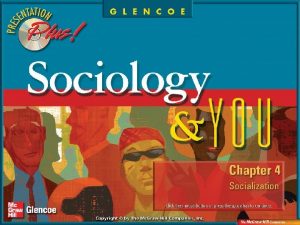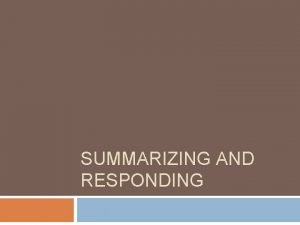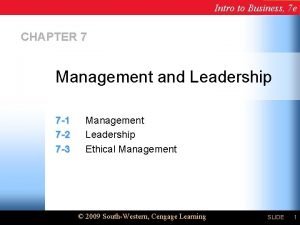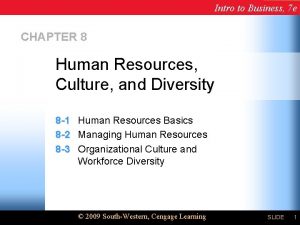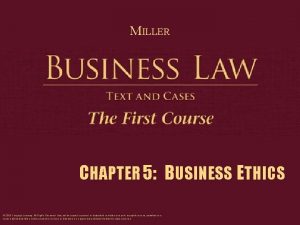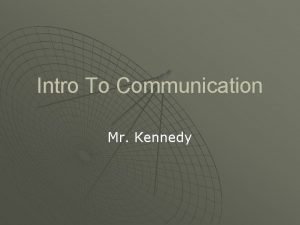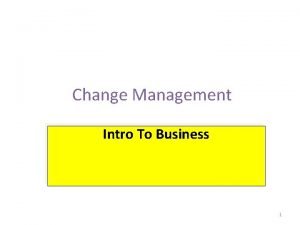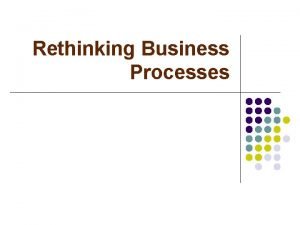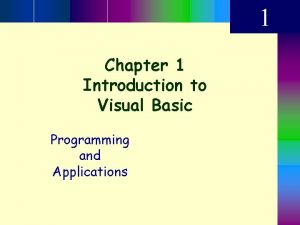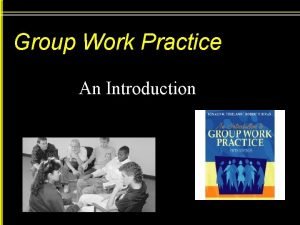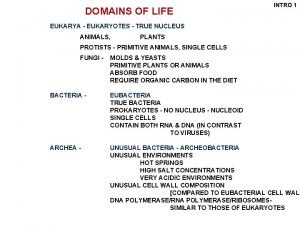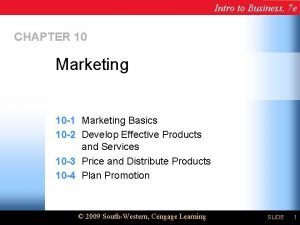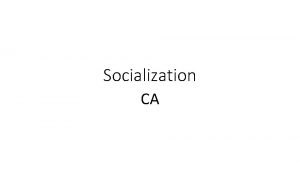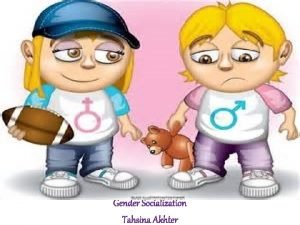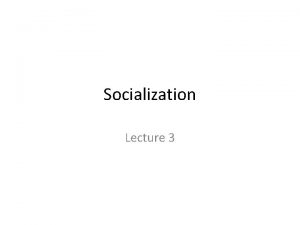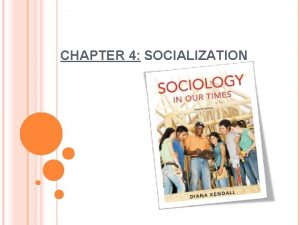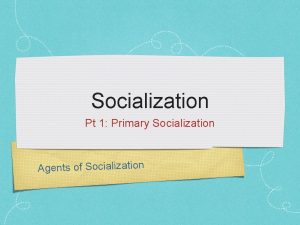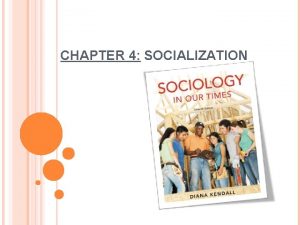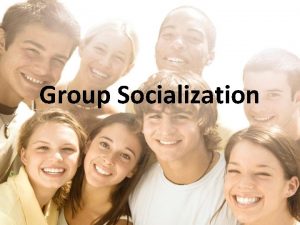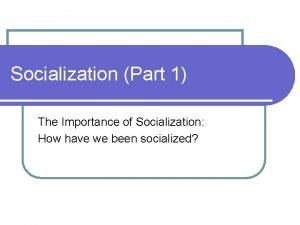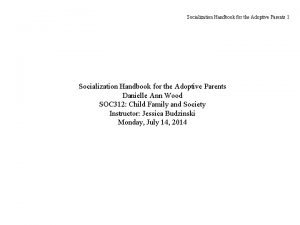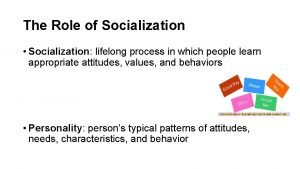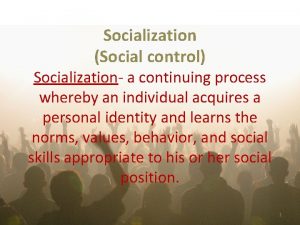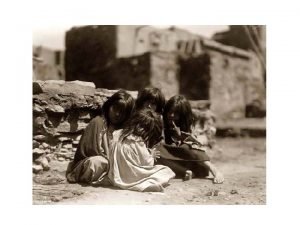Part 1 Intro to Socialization What is Socialization
















































- Slides: 48

Part 1: Intro to Socialization

What is Socialization? • DEFINITION: the process by which individuals learn the ways of society and culture (basic skills, values, beliefs and appropriate behavior) • Necessary for a successful existence • Lifelong process

The Big Questions of Socialization • How do we learn to get along with others?

The Big Questions of Socialization • How do we learn to view ourselves as one among others? • How do others influence us?

Part 2: The Social Experience

What is Personality? • DEFINITION: the sum total of behaviors, attitudes, beliefs & values that are characteristic of an individual • Determines how we adjust to our environment & how we react in certain situations

Personality Development: Nature v. Nurture • Charles Darwin (SOCIOBIOLOGY; NATURE): • All human behavior is instinctive; inherited behavioral patterns • John B. Watson (BEHAVIORISM; NURTURE): • All human behavior can be taught

Nature or Nurture? • Brown eyes • Enjoys bungee jumping • 6’ tall • Red hair • IQ of 150

Nature or Nurture? • • Weighs 500 pounds Depressed Alcoholic Has cancer

Personality Development: Nature v. Nurture • Twin Studies: • Used to determine heritability; VERY important in understanding the role of genes and environment in forming an individual

Personality Development: Nature v. Nurture • Premise: • Since identical twins have identical genes, differences between them are solely due to environmental factors


Personality Development: Nature v. Nurture • Elyse Schein and Paula Bernstein • A classic twinning study • http: //www. youtube. com/watch? v=1 gwnz. W 4 j. OMI

The Sociological View • Sociologists believe personality development, or a fairly consistent pattern of acting, thinking and feeling is shaped by BOTH biology and social experience

Personality Development: Nature v. Nurture • 4 Factors That Influence Personality: • Heredity • Birth Order • Parents • Cultural Environment

Heredity • Definition: • Transmission of genetic characteristics from parents to children • Includes aptitude – capacity to learn a particular skill or acquire a particular body of knowledge

Birth Order • Research indicates that birth order DOES have an influence on personality development • ONLY CHILDREN: tend to endure pressure to achieve & excel; overactive and socially involved ; many are leaders; often worrisome

Birth Order • OLDEST CHILDREN: tend to share traits with only children; cautious & achievement oriented • SUBSEQUENT CHILDREN: better in social relationships; more affectionate; friendly & creative; more sensitive & humorous

Silverman’s Class: Birth Order & Average GPA • • Oldest/Only Child: 15 Average GPA: 3. 58 Youngest Child: 14 Average GPA: 3. 35

Parents • A child’s FIRST attachment is to his or her mother • Later, both parents serve as role models & shape perception of sex roles & family members • Parental characteristics can influence level of education, religious affiliation, cultural heritage,

Cultural Environment • A society’s cultural environment may determine which personality traits are emphasized • For example, American culture emphasizes competition and success

Social Isolation • Effects on Nonhuman Primates: • The Harry Harlow Experiments • Results?

Social Isolation: Effect on Children • • Feral Children: Wild or untamed children Raised in isolation Case Studies: Anna & Isabelle Genie, “The Wild Child” Results?

Part 3: The Process of Socialization Much research forms the basis for our understanding of human development…

The Concept of Self • Definition: your conscious awareness of possessing a distinct identity that separates you and your environment from other members of society • How do you develop a sense of self?

Charles Horton Cooley: The Looking Glass Self • The Looking Glass Self: • Developing an image of oneself based on how we think others see us • “I am, who I

George Herbert Meade: The Social Self • Role Taking: • Take roles of others in society to better understand what YOUR expectations are • Usually starts with your closest relationships -“significant others” • We internalize the attitudes, expectations, and viewpoints of

George Herbert Meade: The Social Self • I and ME • I is the unsocialized spontaneous, selfinterested component of personality & self-identity • ME is the part of ourselves that is aware of the expectations and attitudes of society – the socialized self

Part 4: Agents of Socialization

Agents of Socialization • • Family Peer Group School Mass Media

Agents of Socialization • The FAMILY: Structured • Principal agent of ALL children (0 -adolescense) • Can be deliberate or unconscious • EXAMPLES: • Deliberate socialization? • Unconscious socialization?

Agents of Socialization • The PEER GROUP: Loose • Primary group; composed of those similar in age & background • Increasing importance during adolescence; focuses on the skills necessary to “fit in” to subculture • Group goals are often at odds with societal goals

Agents of Socialization • • • The SCHOOL: Highly Structured Deliberate socialization EXAMPLES: Class activities/academic subjects Values education ***Peer groups present; family involvement

Agents of Socialization • The MASS MEDIA: Loose • TV, radio, magazines, internet, newspaper, etc. • Unconscious socialization (debatable) • Most influential form of mass media? • Television (98% of homes; 7

Agents of Socialization • Positive Impact of Mass Media: • Exposure to certain elements of society that one might not otherwise be exposed to • Negative Impact of Mass Media: • Exposure to violence • Impact of “popular” culture

Agents of Socialization • Secondary Agents of Socialization: • Clubs & Organizations (Boys Scouts, etc. ) • Religious Affiliation • Government • Ethnic Group • Work

Agents of Socialization • Total Institutions: • Isolates members from the rest of society • EXAMPLES: • Prisons, psychiatric hospitals, monasteries • Generally, the primary goal of total institutions is to RESOCIALIZE, or

Part 5: Socialization & the Life Course

Stage 1: Childhood • • • Childhood: First 12 years of life Characterized by a certain level of freedom from responsibilities • Must acquire key life lessons

Stage 2: Adolescence • Definition: • The period between the normal onset of puberty and the beginning of adulthood • Puberty: • The physical maturing that makes an individual capable of sexual reproduction

Stage 2: Adolescence • Adolescence is NOT universal • In many preindustrial societies, young people go directly from childhood to adulthood • In the U. S. 3 factors create this distinct life stage – Education (mandatory until age 16) – Child Labor Laws

Stage 2: Adolescence • Characteristics of • • Adolescence: Biological Growth & Development Changes can cause anxiety or embarrassment, especially if individual is physically way ahead or behind peers Undefined Status Some adults treat adolescents as

Stage 2: Adolescence • Increased Decision Making • Making many of their own decisions for the first time • Increased Pressure • From multiple sources: parents, friends, school, society

Stage 2: Adolescence • Search for Self • Determining personal values and priorities, & figuring out role he/she will play in society • Anticipatory Socialization • Learning the rights, obligations, and expectations of a role to prepare for assuming that role in

Stage 3: Adulthood • Jobs, finance, marriage, pregnancy, health, fitness, stress, divorce, physical changes, death, etc.

Stage 3: Adulthood (Men) • • • Issues: Tough Trap Accidents Violence Suicide

Stage 3: Adulthood (Women) • • • Issues: Beauty Trap Eating Disorders Depression Double Standards

Stage 3: Adulthood Later Years • • Issues: Young-Old (ages 65 -74) adjustment to retirement Middle-Old (ages 75 -84) & Old-Old (ages 85+) • adjustment to physical and mental functioning, adjustment to dependency and impending death
 The part of the self formed through socialization
The part of the self formed through socialization What is a technical description?
What is a technical description? Part whole model subtraction
Part whole model subtraction Layout of bar
Layout of bar Unit ratio definition
Unit ratio definition The part of a shadow surrounding the darkest part
The part of a shadow surrounding the darkest part Brainpop ratios
Brainpop ratios Part to part variation
Part to part variation Intro body conclusion
Intro body conclusion Intro to ecology
Intro to ecology Introduction to reverse engineering
Introduction to reverse engineering Dr phil intro
Dr phil intro Essay structure
Essay structure Php intro
Php intro Intro section on facebook
Intro section on facebook Intro to digital technology
Intro to digital technology Vanitas intro
Vanitas intro Intro to business chapter 7
Intro to business chapter 7 Intro to business chapter 8
Intro to business chapter 8 Random forest intro
Random forest intro Makeup intro
Makeup intro Outcome based ethics
Outcome based ethics Intro to vectors
Intro to vectors Phrases vs clause
Phrases vs clause Andrew ng intro machine learning
Andrew ng intro machine learning Medical word parts
Medical word parts Conclusion formula
Conclusion formula Contoh intro power point
Contoh intro power point Intro paragraph for argumentative essay
Intro paragraph for argumentative essay Intro to ifs
Intro to ifs Mr kennedy intro
Mr kennedy intro Intro for performance task
Intro for performance task How to write press release headline
How to write press release headline Question introduction
Question introduction Reference as a theory of meaning
Reference as a theory of meaning Alter intro template
Alter intro template What is this
What is this Intro lll
Intro lll Introduction to visual basic programming
Introduction to visual basic programming Intro to offensive security
Intro to offensive security Solar system intro
Solar system intro The xx intro live
The xx intro live Bomb calorimetry equation
Bomb calorimetry equation Definition of group work
Definition of group work Sports product advertisement
Sports product advertisement True life intro
True life intro Apush thesis formula
Apush thesis formula La princesse de clèves introduction dissertation
La princesse de clèves introduction dissertation Intro to business chapter 10 test answers
Intro to business chapter 10 test answers
